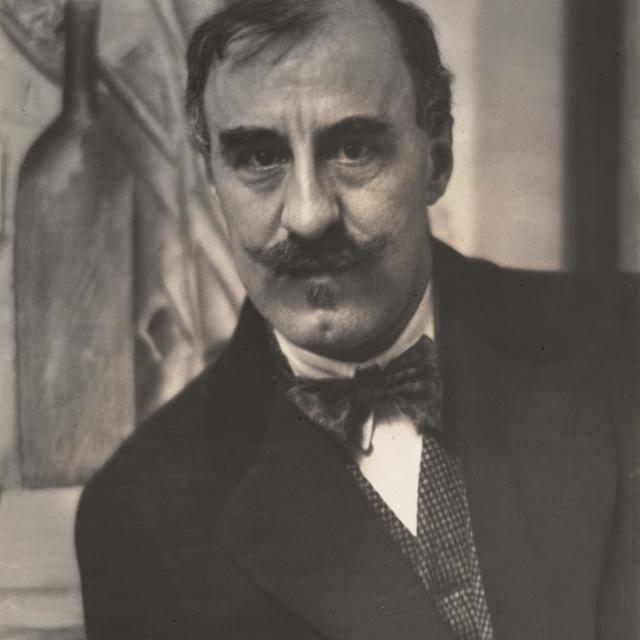
Alfred H. Maurer
American, 1868 - 1932
Alfred Maurer, who spent nearly two decades as an expatriate in Paris, was one of the first American artists to work in a postimpressionist style. He was born in New York City on April 21, 1868. Maurer’s parents, Louis and Louisa, were both of German descent. Maurer’s father was a successful illustrator, most notably with Currier & Ives, and a formidable figure in his son’s life, ultimately opposing Maurer’s embrace of modernism. Maurer left high school in 1884 to work in the lithography firm opened by his father, Heppenheimer & Maurer, and then held a series of other commercial art positions. He studied at the National Academy of Design in New York, taking classes intermittently from 1885 to 1895.
Maurer left New York for Paris in 1897. He lived there, with only a few trips back to New York, until the outbreak of World War I in 1914. Upon his arrival in Paris, Maurer briefly enrolled in the Académie Julian. But soon he opted to continue his art education informally: in the home of collectors and siblings Gertrude and Leo Stein and through his contacts with American and European artists and gallerists in the city. Maurer’s time in Paris was one of stylistic evolution as he encountered, processed, adapted, and transformed art styles of the period. At the turn of the century, Maurer’s painting was informed by aestheticism, emphasizing beauty and decoration over subject matter, of which James McNeill Whistler (American, 1834–1903) was the most prominent practitioner. Young Woman in Kimono is an example of Maurer’s work at this time.
Maurer exhibited in the United States, as well as in Europe, while abroad. Around 1904 his style transitioned to a realism aligned with the work of Robert Henri (American, 1865–1929). Maurer painted portraits and scenes in the cafés, dance halls, and streets of Paris in the gritty, looser style of the Ashcan school. Within a few years—influenced in part by the Edgar Degas (French, 1834–1917), Paul Cézanne (1839–1906), and fauvist paintings on view at the Stein residence—Maurer adopted a bright, expressive palette divorced from naturalistic representation. He experimented in this style on a wide range of subjects, including figures, still lifes, and landscapes.
In 1909 Alfred Stieglitz (American, 1864–1946) hosted a two-person exhibition of work by Maurer and John Marin (American, 1873–1953) at his New York gallery, 291, which raised the profile of both artists. Maurer had his first solo exhibition in 1913 at Folsom Galleries in New York, and his work was included in the Armory Show that same year. Maurer also played a role in sourcing artwork for Albert C. Barnes’s collection (eventually forming the Barnes Foundation, Philadelphia), first assisting William Glackens (American, 1870–1938) and then as an independent agent until he departed Paris.
Maurer returned to New York in 1914 and lived in his parents’ home, though he spent many summers painting in Marlboro, New York, on the Hudson River. His work was included in the Forum Exhibition of Modern American Painters at Anderson Galleries in 1916, and he frequently exhibited with the Society of Independent Artists. Art dealer Erhard Weyhe purchased all of the works in Maurer’s studio in 1924 and began providing an annual stipend, loosening the artist’s financial constraints. In Maurer’s last years he dedicated himself to cubist experimentation, particularly in tabletop still lifes and figures such as Abstract Heads.
Maurer died on August 4, 1932. Memorial exhibitions were held by the Society of Independent Artists and Uptown Gallery, and a major retrospective of Maurer’s work toured the United States in 1949.
Explore Selected Works
Artwork

Abstract Heads
Abstract Heads
Alfred H. Maurer · c. 1931 · unidentified media on fabric mounted on panel · Accession ID 2014.136.136
Artwork

Untitled (Woman in Leotard)
Untitled (Woman in Leotard)
Alfred H. Maurer · c. 1924 · linocut in black on wove paper · Accession ID 2008.115.3382
Artwork

Young Woman in Kimono
Young Woman in Kimono
Alfred H. Maurer · c. 1901 · oil on canvas · Accession ID 2014.136.70



